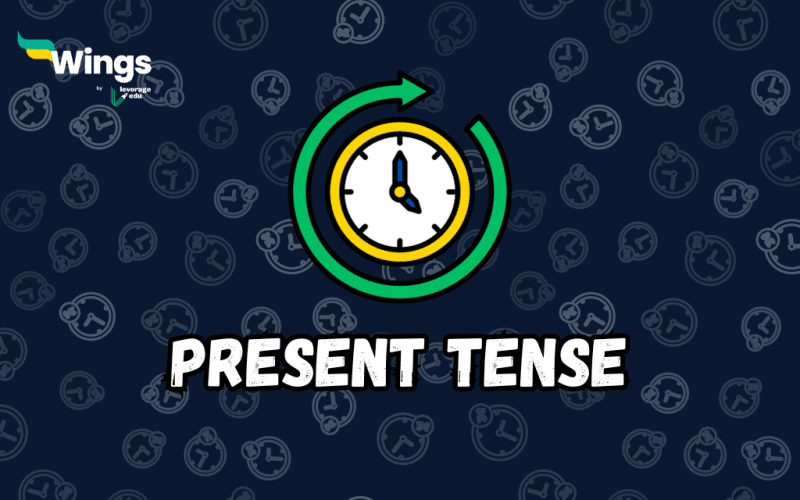Present Tense: Tenses, in the English Language, are used to describe the time of an event or action. In the same group, the Present Tense is used to elaborate on what is happening now. This blog article entails information about present tenses, their types, and other relevant information followed by it. Continue reading to get more informative content regarding present tenses and their everyday usage.
This Blog Includes:
Tenses Rules and Examples in English Grammar
What is Present Tense
Present tense is a grammatical tense that is used to describe actions, events, or states that are happening right now or at the present time. It is one of the three primary tenses in English, along with past tense and future tense. Present tense is used to convey actions or conditions that are ongoing, habitual, or generally true.
Also Read: Subject-Verb Agreement: Definition, 12 Rules & Examples
Types of Present Tense
In English grammar, there are several types of present tenses, each used to describe actions or states happening in the present. These are the primary present tenses in English, and they are used in different contexts to convey different meanings and nuances. It’s essential to choose the right tense to accurately express the time and nature of an action or situation in the present.
| Types of Tenses | Definition and Examples |
| Simple Present Tense | It describes actions or situations that are happening at the present moment, or actions that are ongoing and in progress. Example: I am studying for my exam. |
| Present Perfect Continuous Tense | An action that started in the past and is still ongoing in the present, or an action that has recently finished. Example: She has been living in London for five years. |
| Present Perfect Tense | The present perfect tense is a verb tense used to describe actions that are considered to be completed at the present moment. Example: I have read that book. |
| Present Continuous Tense | It describes actions or situations that are happening at the present moment, or actions that are ongoing and in progress.Example: I am studying for my exam. |
| Present Unreal Conditional Tense | It is a grammatical construction used in English to talk about hypothetical or unreal situations in the present or future. Example: If I were hungry, I would eat a snack. |
Do Check Out: Leverage Edu Learn English Youtube Channel
Structure of Past Tense
Following is the structure for past tense:

Present Tense in General Format
Take a look at the following table to understand the general format of the present tense in terms of positive, negative, interrogative, and negative interrogative.
| Tenses | Rules |
| Positive | Subject + Verb Example: She likes roses. |
| Negative | Subject + Do not/Does not (Don’t/Doesn’t) + VerbExample: She does not like pizzas |
| Interrogative | Do/Does + Subject + VerbExample: Does she likes roses? |
| Negative Interrogative | Don’t/Doesn’t + Subject + VerbExample: Doesn’t she like bananas? |
Present Tense Examples
Here are some examples of sentences in the present tense:
- I eat breakfast every morning.
- She walks to the park in the afternoon.
- They study hard for their exams.
- The sun rises in the east.
- He works at a software company.
- We play soccer on the weekends.
- The cat chases the mouse.
- The teacher explains the lesson.
This was all about the Present Tense Example, rules and more. Hope you understand the concept and where it’s used. You can also follow Leverage Edu for more exciting and informative blogs.
 One app for all your study abroad needs
One app for all your study abroad needs














 45,000+ students realised their study abroad dream with us. Take the first step today.
45,000+ students realised their study abroad dream with us. Take the first step today.

